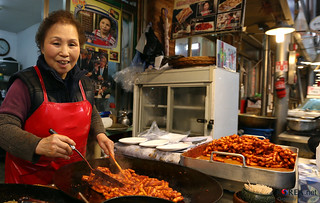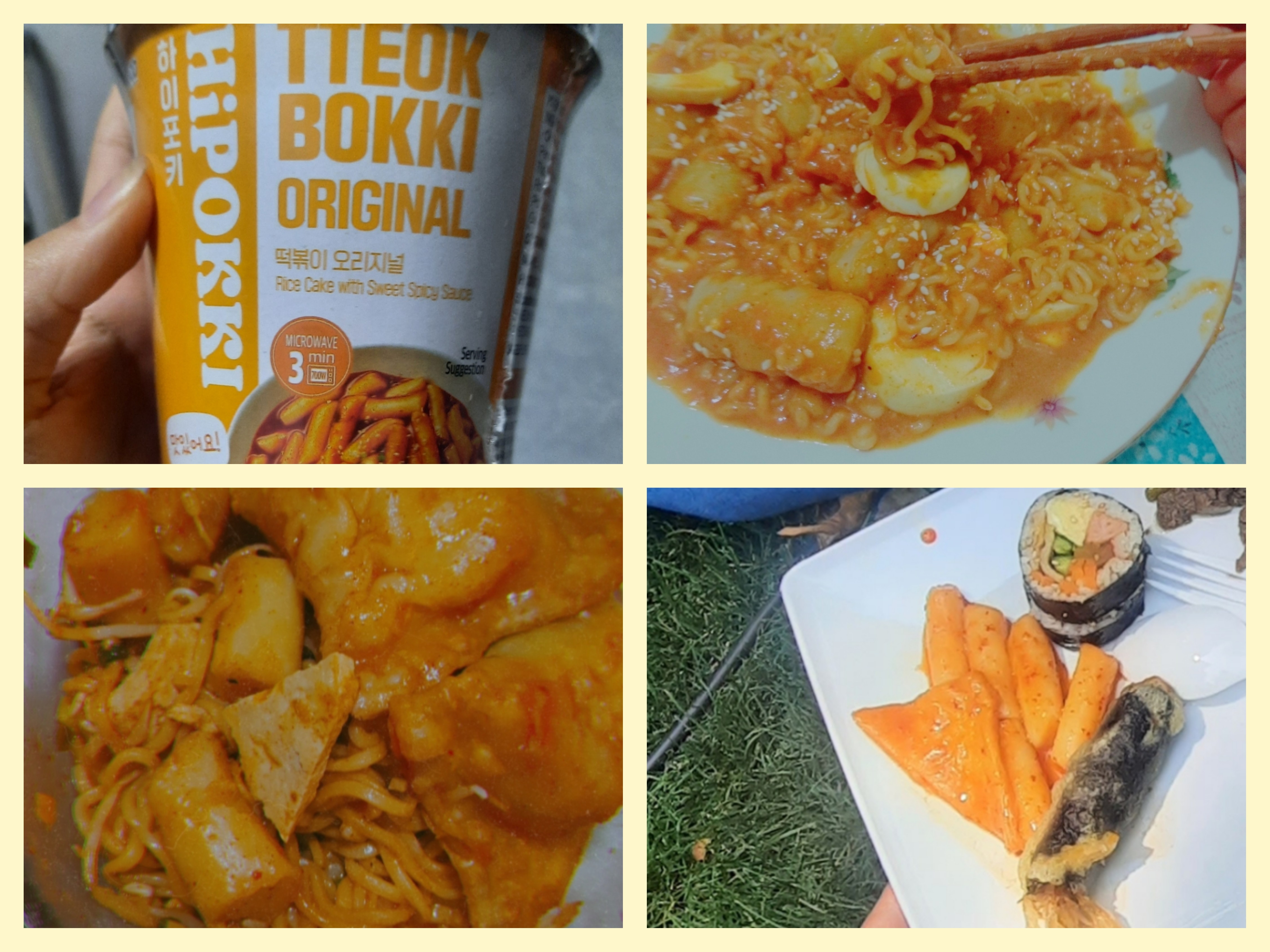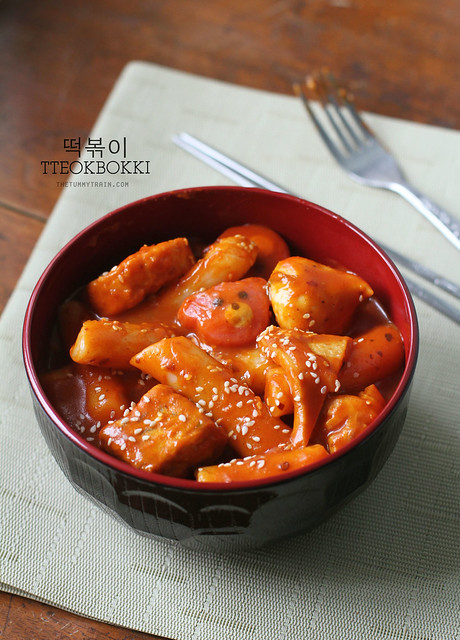Among all the iconic dishes that Korean cuisine has to offer — from sizzling Bulgogi to nourishing Samgyetang, from delicate Japchae to the bold unique crunch of Kimchi — no dish has captured my heart quite like Tteokbokki. It’s my favorite Korean food not simply because of its flavor, but because it represents everything I love about Korean culture.

A traditional bowl of Korean street food Tteokbokki serving with Ramyun and egg with side dishes (photo by Freepik)
What Is Tteokbokki?
Tteokbokki is a popular Korean street food made from chewy rice cakes (tteok) simmered in a spicy, savory, and sweet sauce, often featuring gochujang (Korean chili paste). The dish can also be served with various additions like fish cakes, vegetables, and even ramen noodles. The blend of gochujang, chewy rice cakes, and complementary ingredients like fish cakes or noodles results in a bold yet balanced flavor — spicy, slightly sweet, and deeply savory. It offers a unique and highly satisfying taste experience, appreciated not only by Koreans but by food lovers around the world.
Tteokbokki, at its heart, is more than just chewy rice cakes drenched in red spicy sauce. It is a dish woven into the historical fabric of Korea. Originally known as Gungjung Tteokbokki (royal court Tteokbokki), it was once a soy-sauce-based delicacy served in the palaces of the Joseon Dynasty — elegant, mild, and made for kings. Over time, it transformed with the people. As Gochujang (Korean chili paste) became more accessible, Tteokbokki evolved into the spicy, vibrant dish we now know, sold on street corners, shared among friends, and loved by all generations. It’s a symbol of Korea’s resilience, adaptation, and the way tradition can survive through reinvention.
Today, Tteokbokki is one of the most iconic Korean dishes, especially among younger generations. It is widely available at street stalls, convenience stores, and restaurants. Many Koreans associate it with school memories, social gatherings, and late-night comfort. Its popularity has also grown internationally, thanks to the Korean Wave (Hallyu) and the influence of K-dramas and K-pop culture.

tasteful Tteokbokki serving among locals in street stalls for every generation (photo by Flickr from official Koreanet account)
My Journey On Tteokbokki
I first discovered Tteokbokki not on a plate, but on a screen in a Korean drama. I didn’t know what it tasted like yet, but something about the visual intensity stayed with me. That week, I searched about its recipe, gathered ingredients and made it myself. The process was novel and the result was a dish that hit not only my taste buds, but my heart.
From there, Tteokbokki became my most favorite. I tried instant Tteokbokki from Korean supermarkets, Korean restaurants and eventually, my most memorable plate, which was at the house of the Korean Ambassador that became my most unforgettable Tteokbokki experience I’ve ever had. For the first time, I truly felt as if I had been transported to Korea. The Ttteokbokki served that evening was so unique in flavor and exactly the way I had always imagined it should taste in its home country. It gave me a sense of belonging, even though I was miles away from Seoul.
Furthermore, this emotional connection deepened when I read the book “I Want to Die but I Want to Eat Tteokbokki.” Its title alone captured a paradox I understood deeply: how something simple, like a favorite dish, can anchor you in moments when life feels overwhelming and that is why it remains my favorite Korean dish. Because in every bite, I find not just flavor, but a deep cultural connection.

My journey on Tteokbokki from making it myself and trying it in different places and enjoying it every time (photo by HR Hoora Ghiasi Tari)
Why Tteokbokki Is My Favorite Korean Food?
Tteokbokki stands out in a way few dishes do. Its fiery red color, chewy texture, and intense sweet-spicy flavor make it stand out among all Korean dishes for me. Whether cooked at home or shared with others, Tteokbokki brings warmth, connection, and comfort that go far beyond the plate for me. It reminds me of my connection with Korea, my efforts and all I went through.
Besides how memorable Tteokbokki for me is, its unique texture and flavor combination is another reason why I love it so much. The chewy rice cakes (tteok) were unlike anything I had ever tried before — soft and pleasantly elastic. That chewy sensation was completely new to me, and instantly became something I enjoyed and the sauce which is both spicy and slightly sweet, creates an exciting contrast that keeps me wanting more. Its spicy warmth, chewy texture, and flexibility in serving styles make it not just a dish, but an experience — one that I deeply connect with.

a bowl of spicy Tteokbokki reflects both Korea’s culinary history and its modern street food culture (photo from Freepik)
Beyond taste, Tteokbokki holds a strong emotional and cultural presence. It is food for friendship, street life, youth, and nostalgia. It’s the kind of dish people crave on rainy days, after school, or when they need emotional comfort. For me, Tteokbokki is much more than my favorite Korean food — it represents a connection to a culture I admire deeply. Its bold, comforting flavors and unique chewy texture have created memories I will never forget, from the first time I cooked it myself to testing the most authentic version at the Korean ambassador’s home, Tteokbokki was always a personal comfort and a lasting symbol of my love and appreciation for Korean culture.
How about this article?
- Like8
- Support2
- Amazing1
- Sad0
- Curious0
- Insightful0


